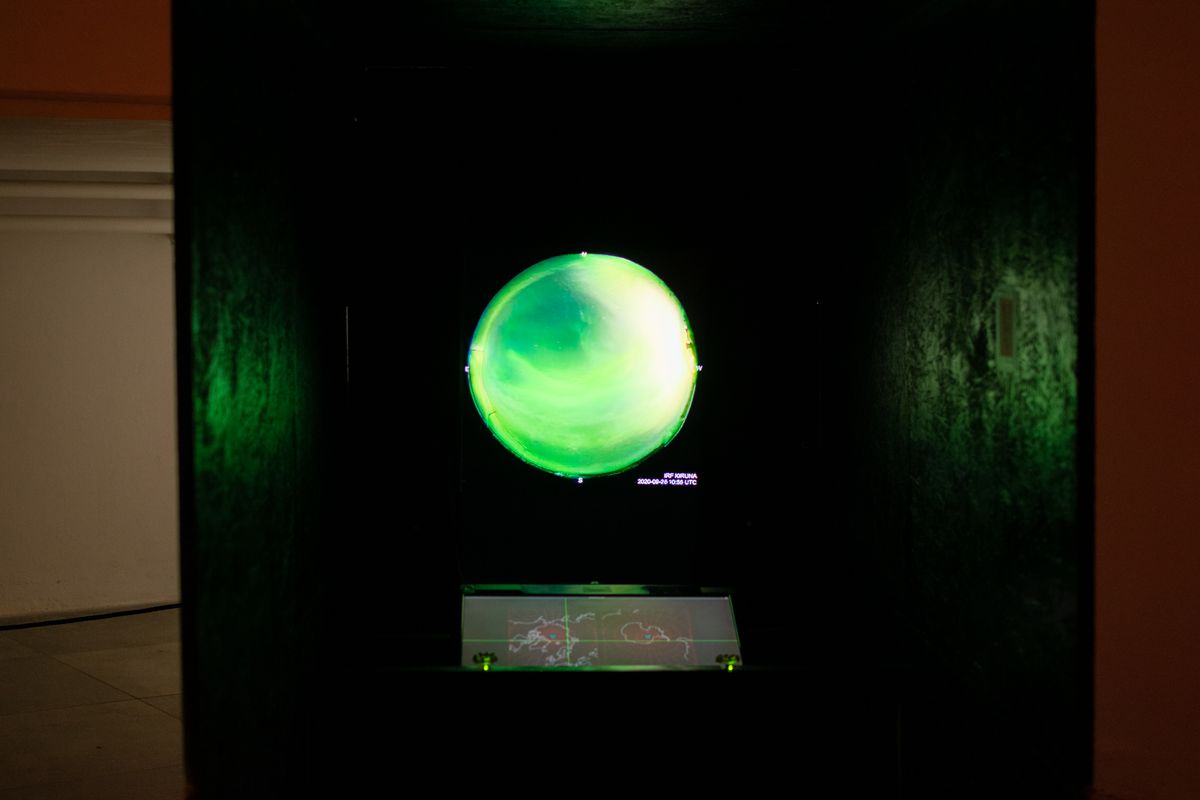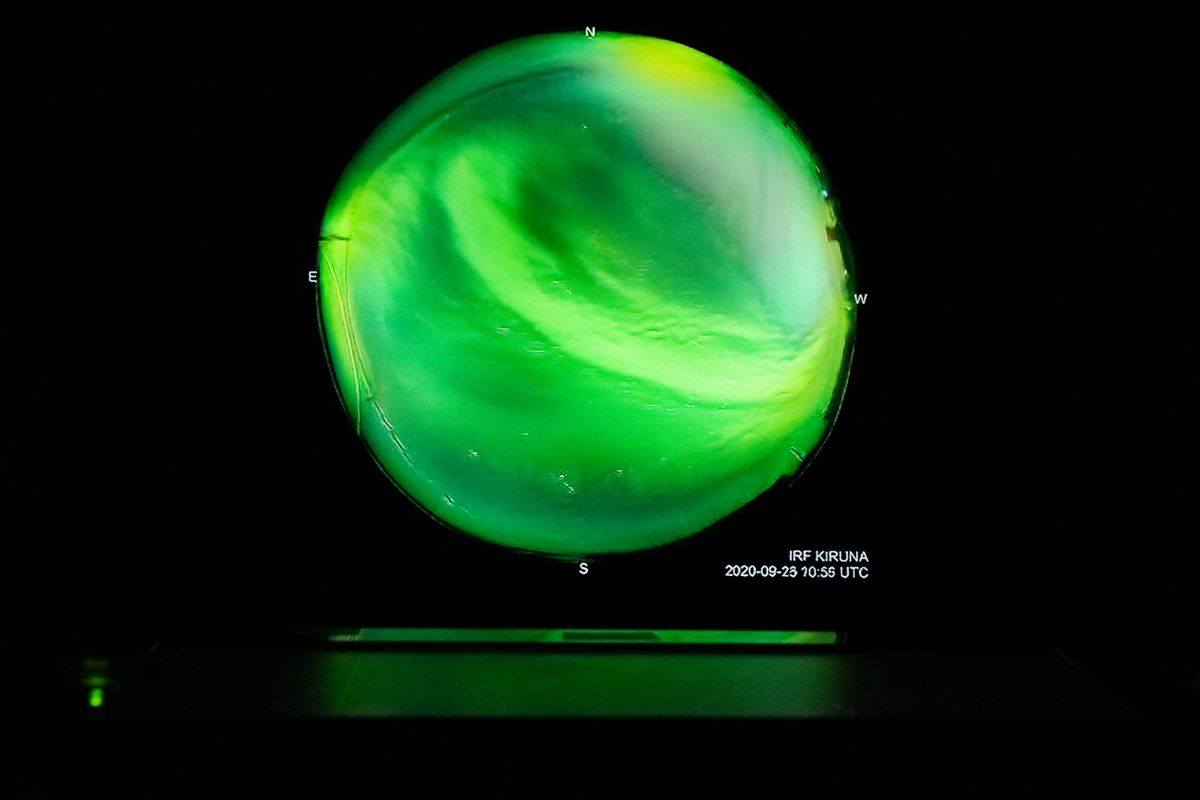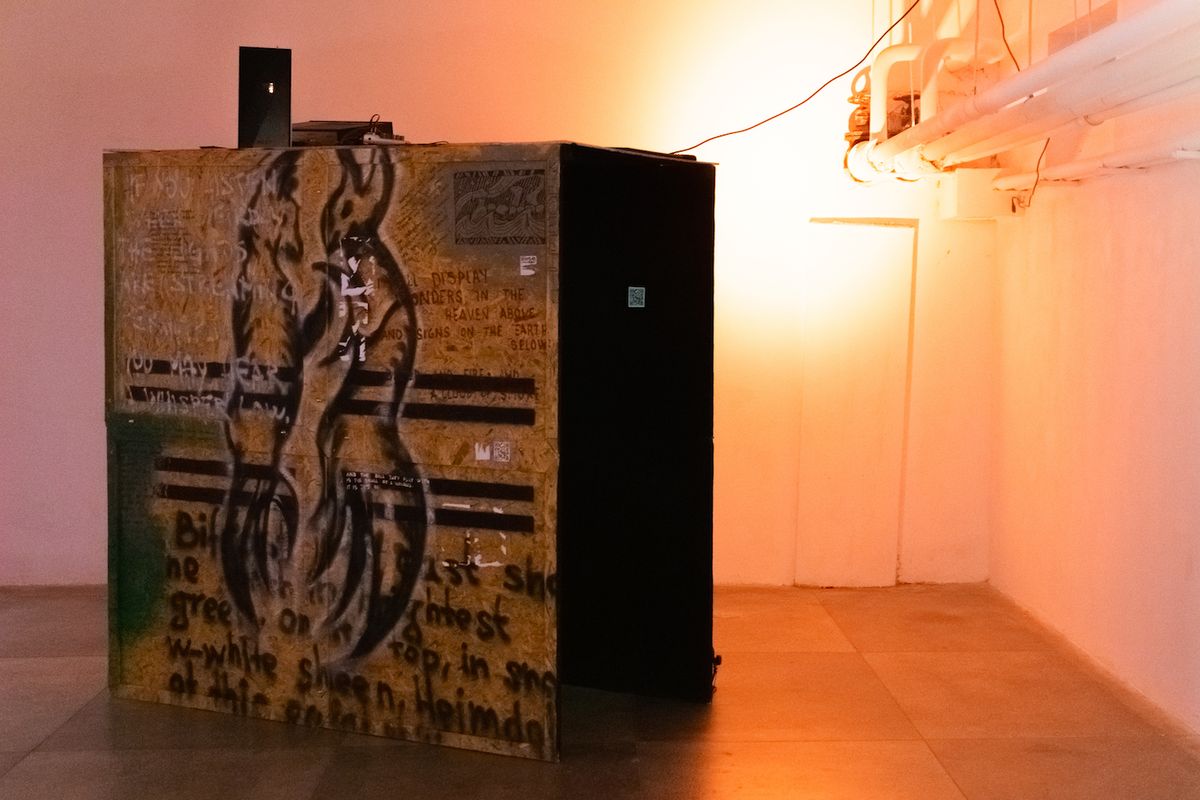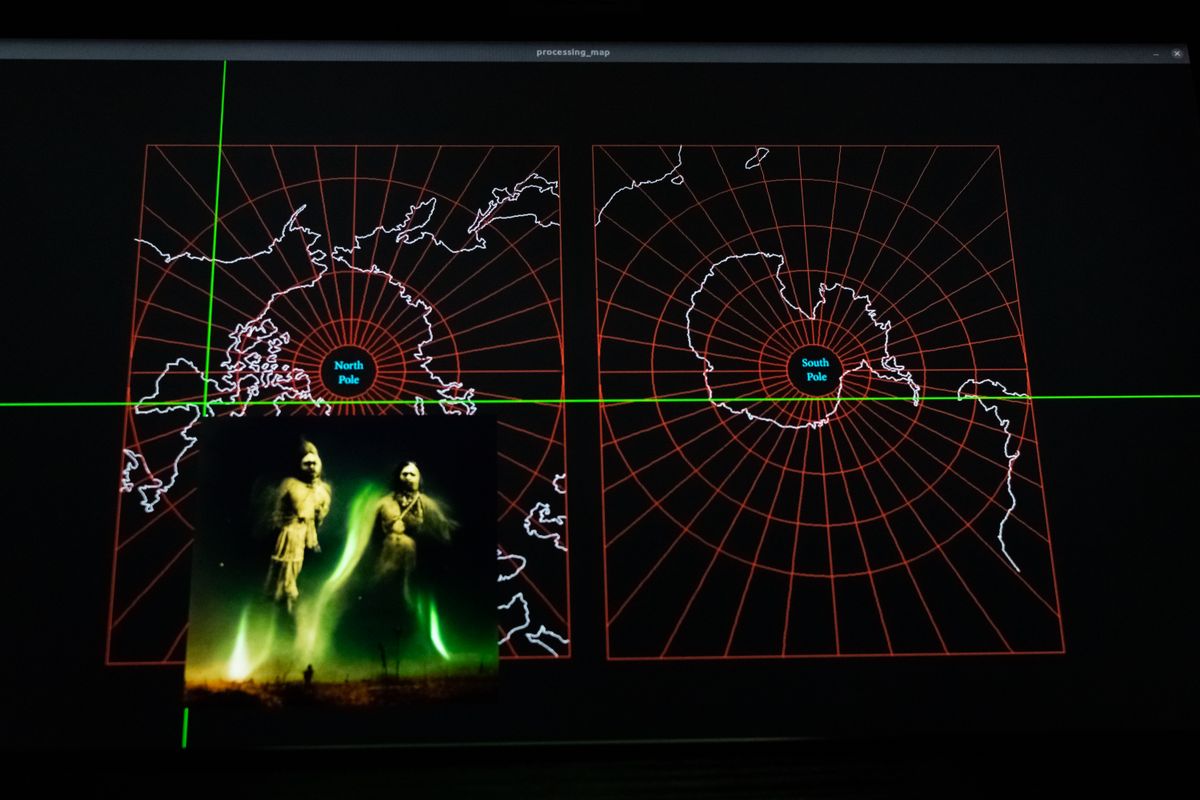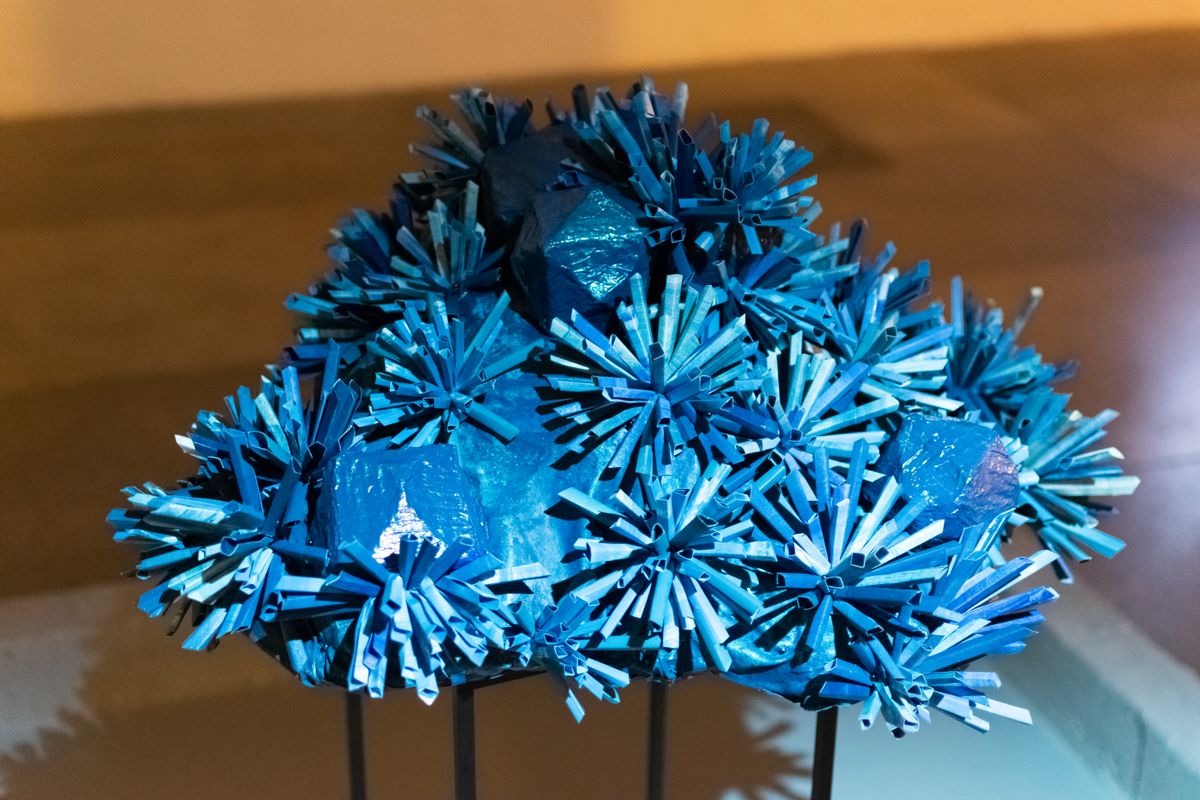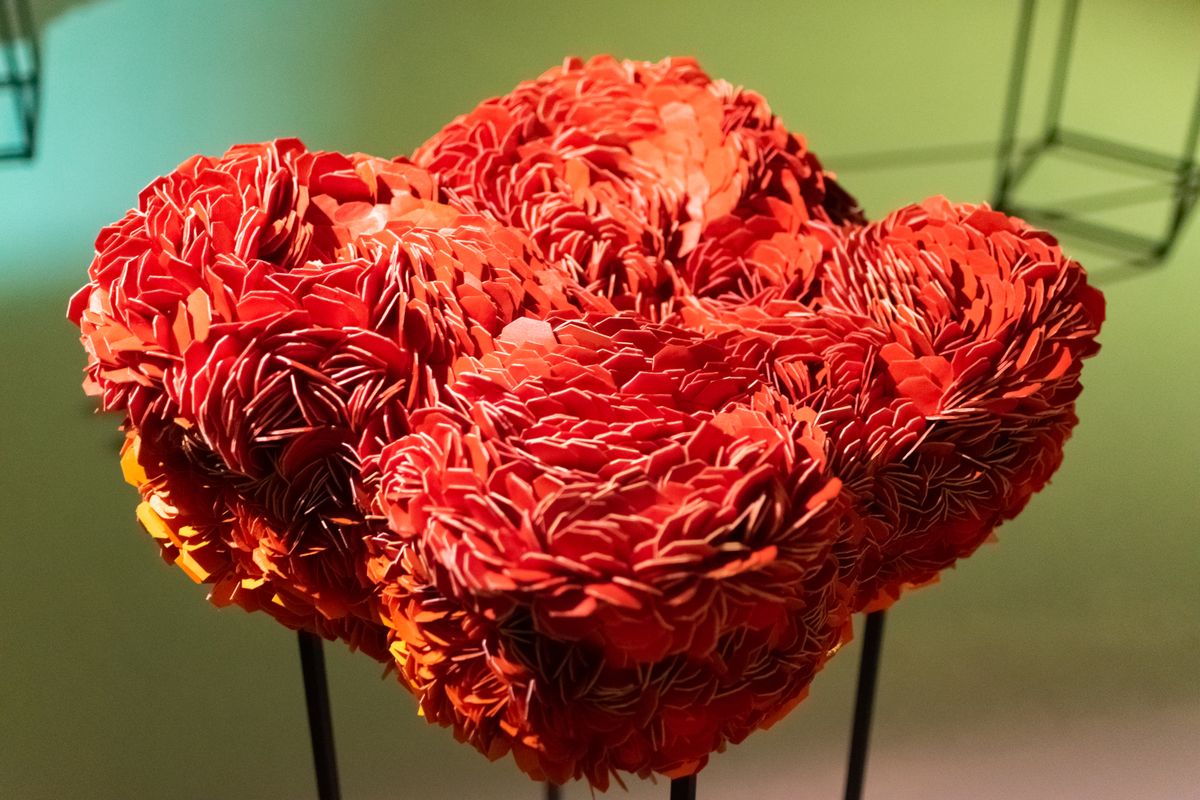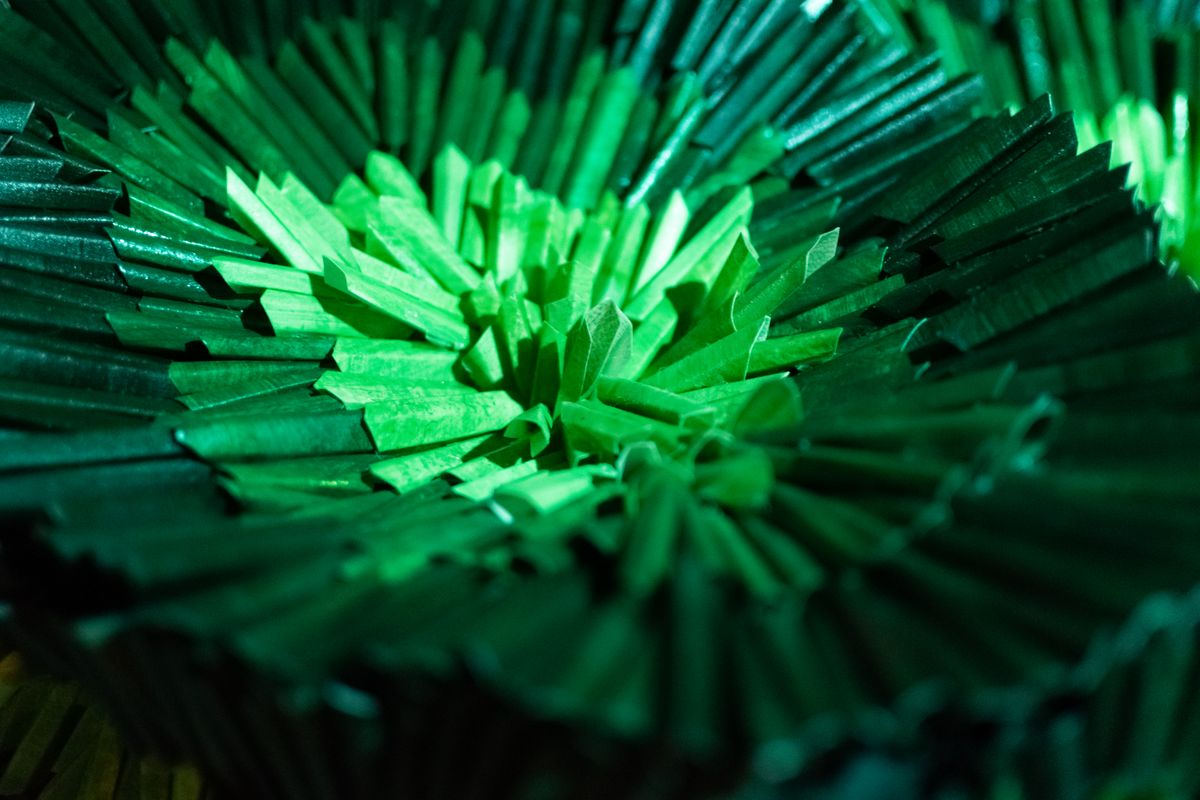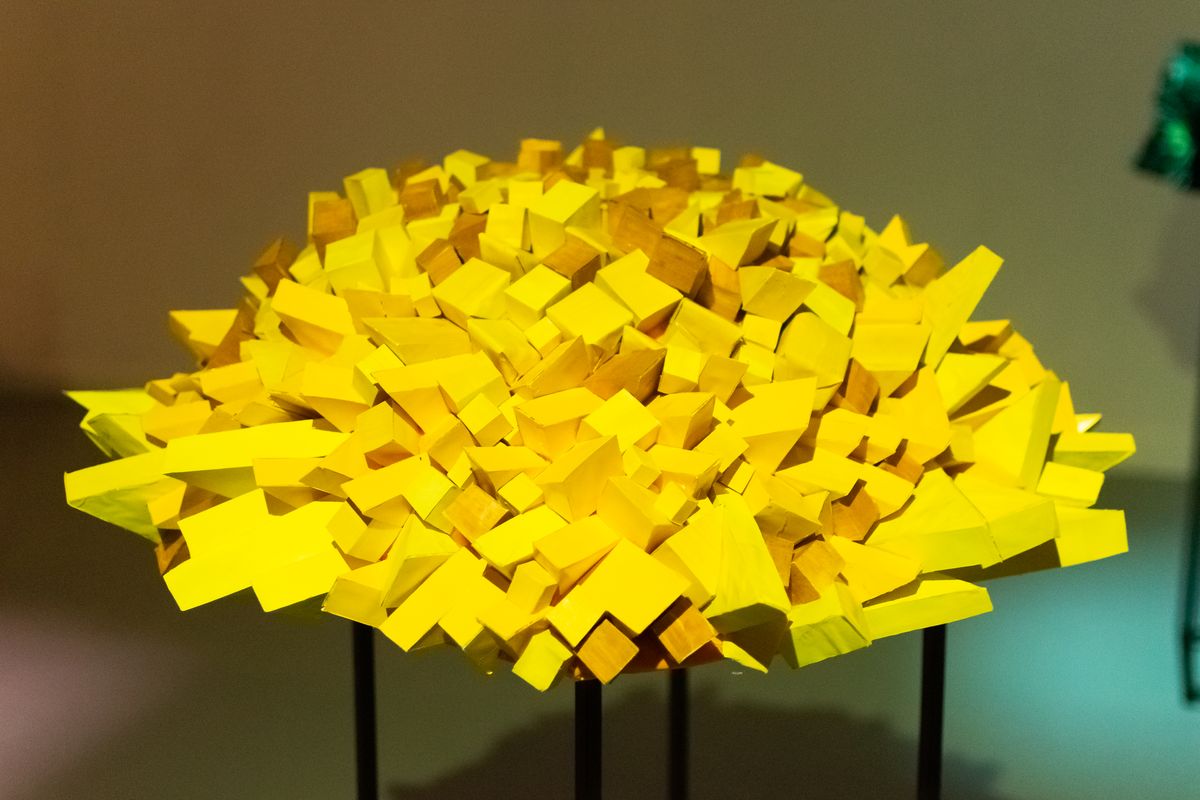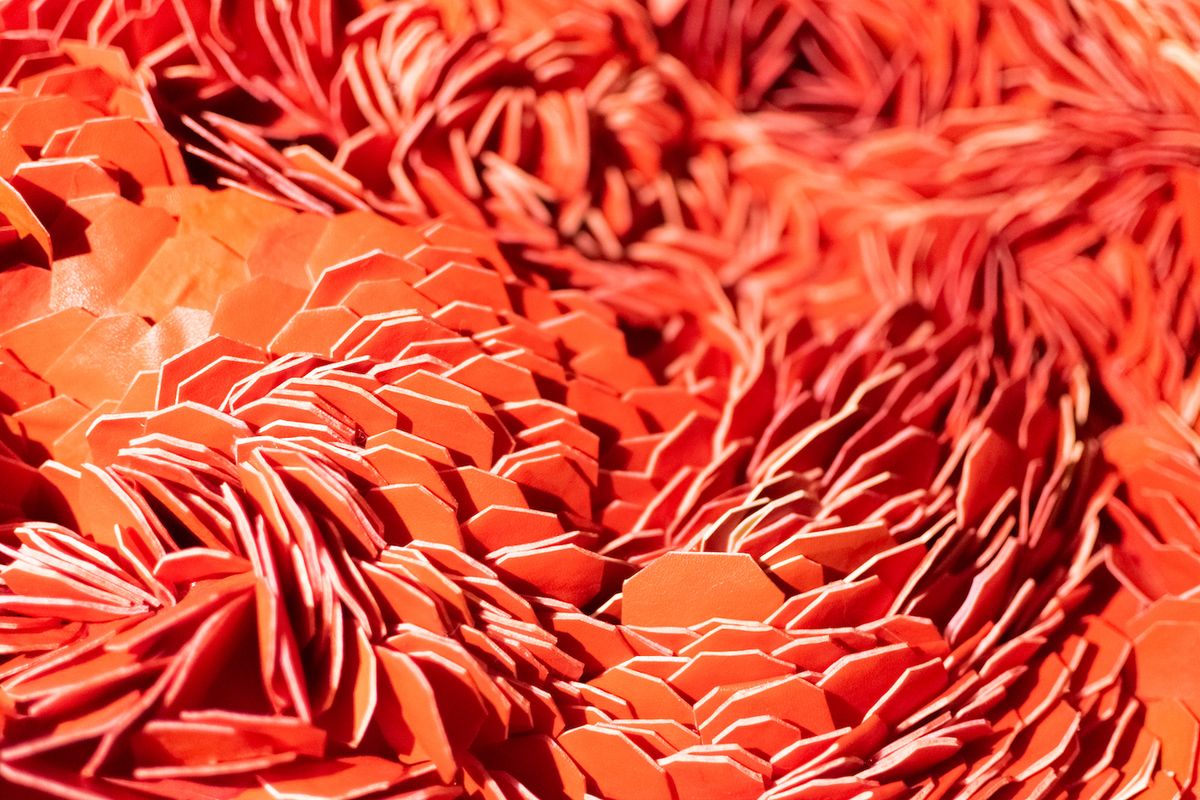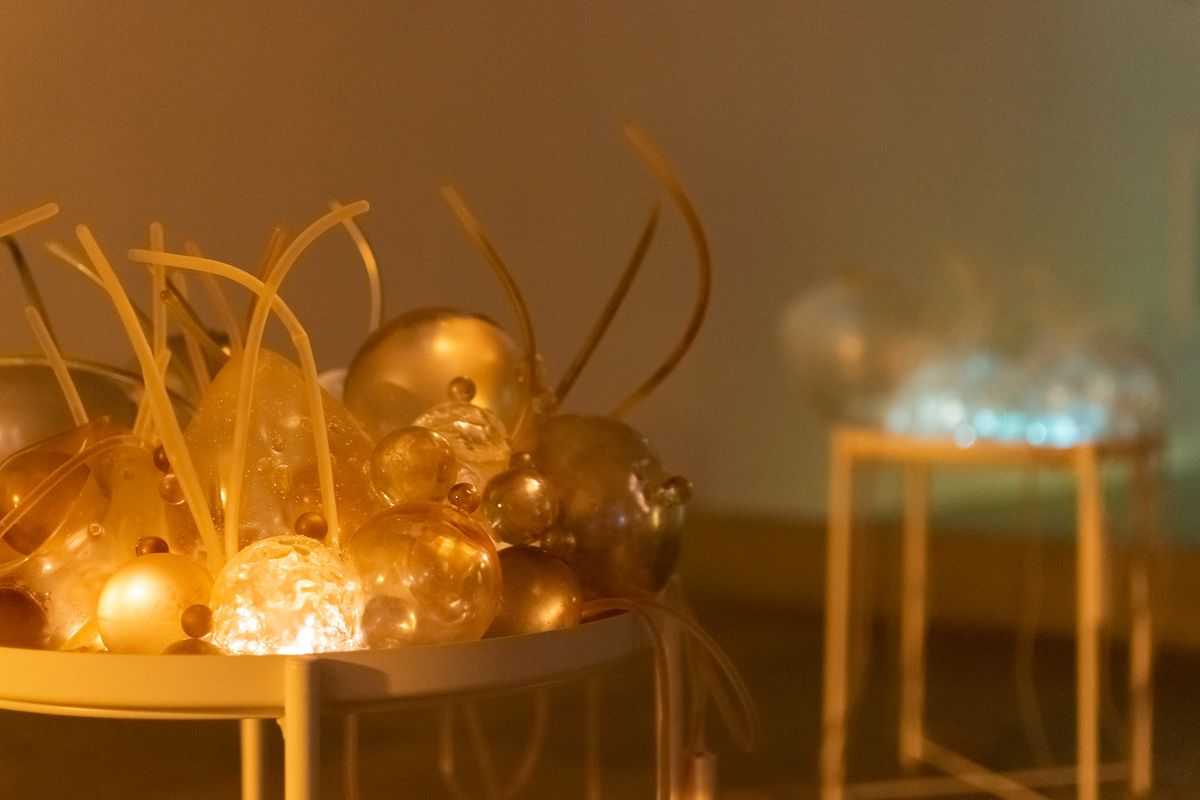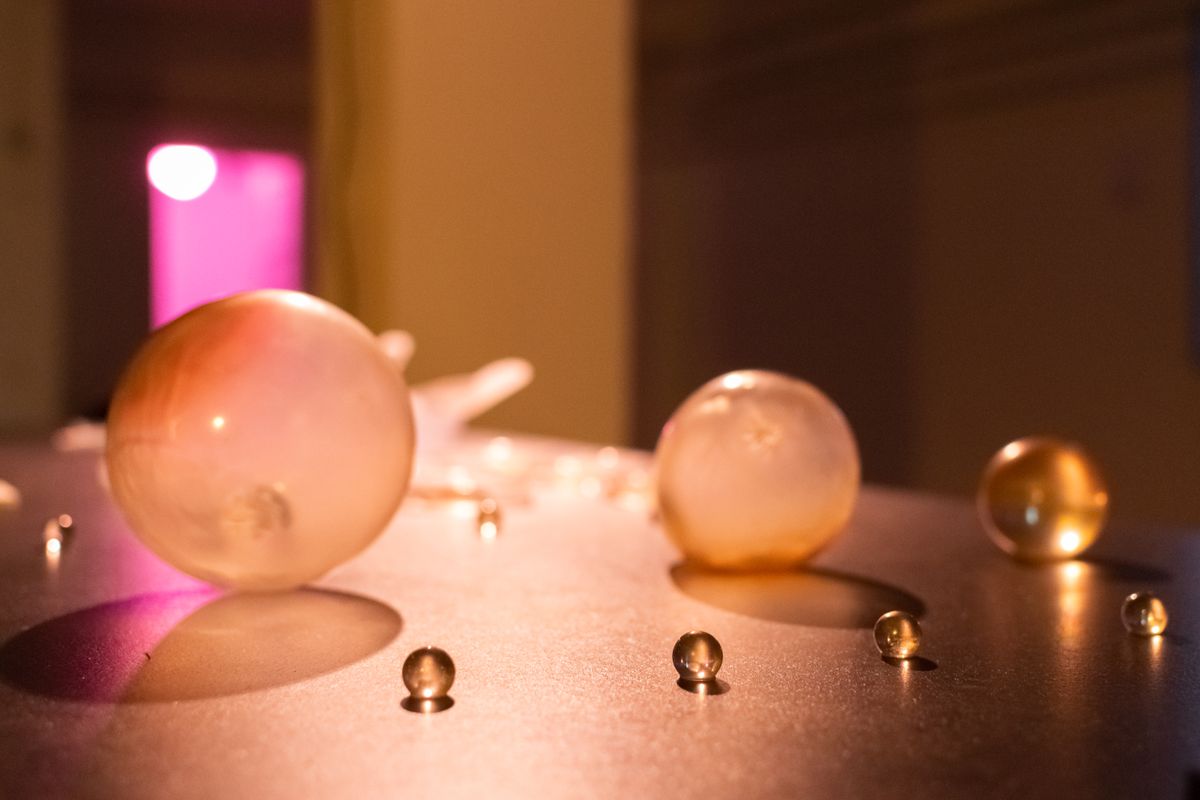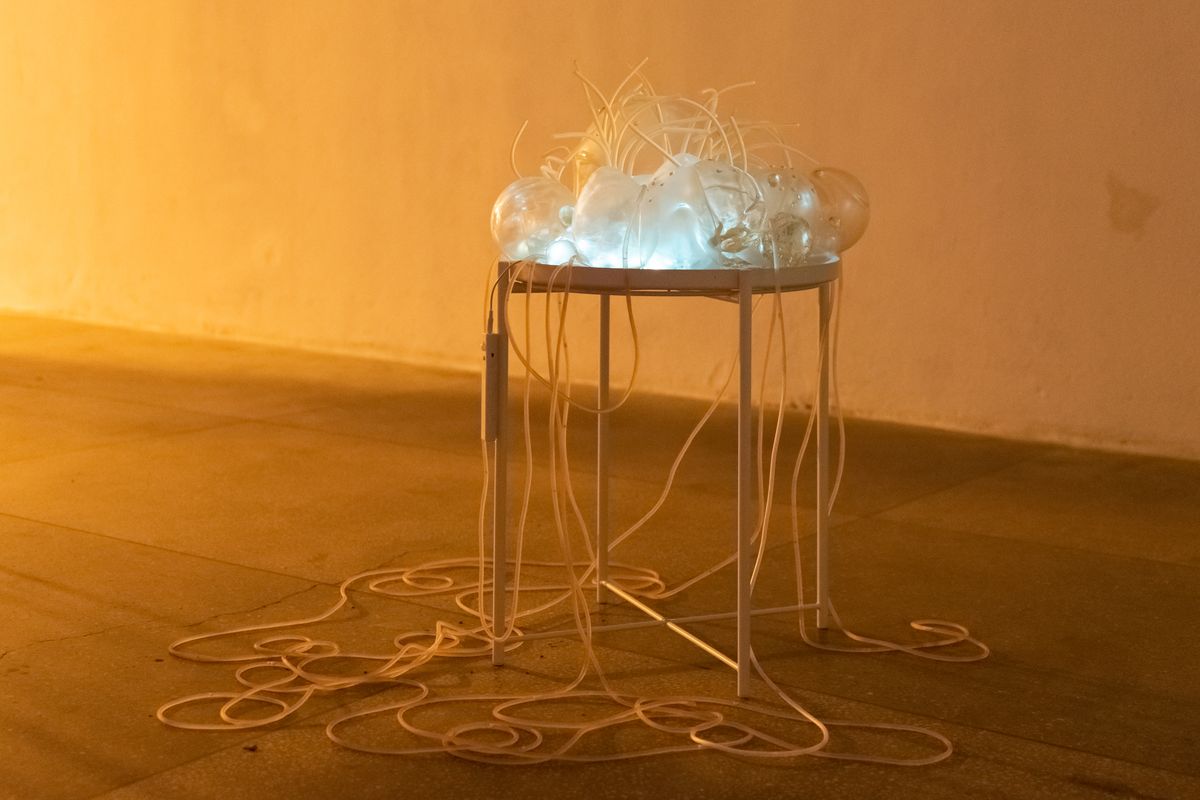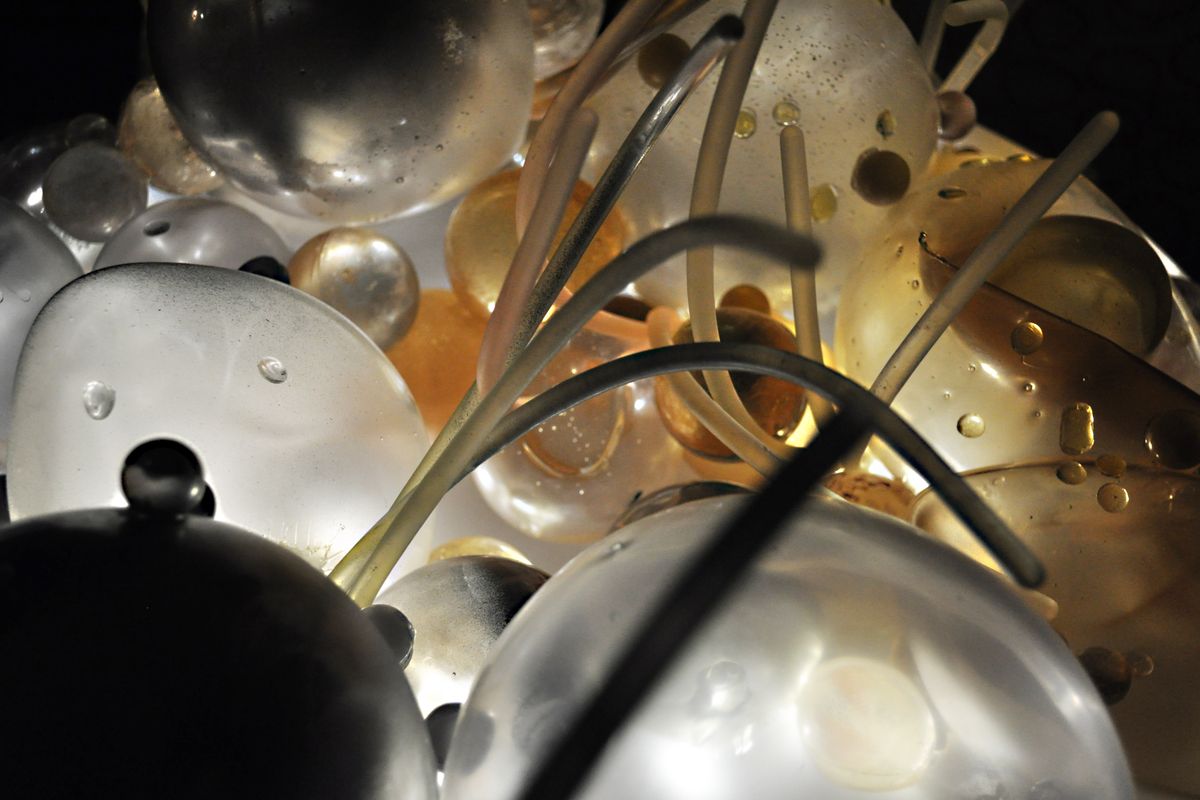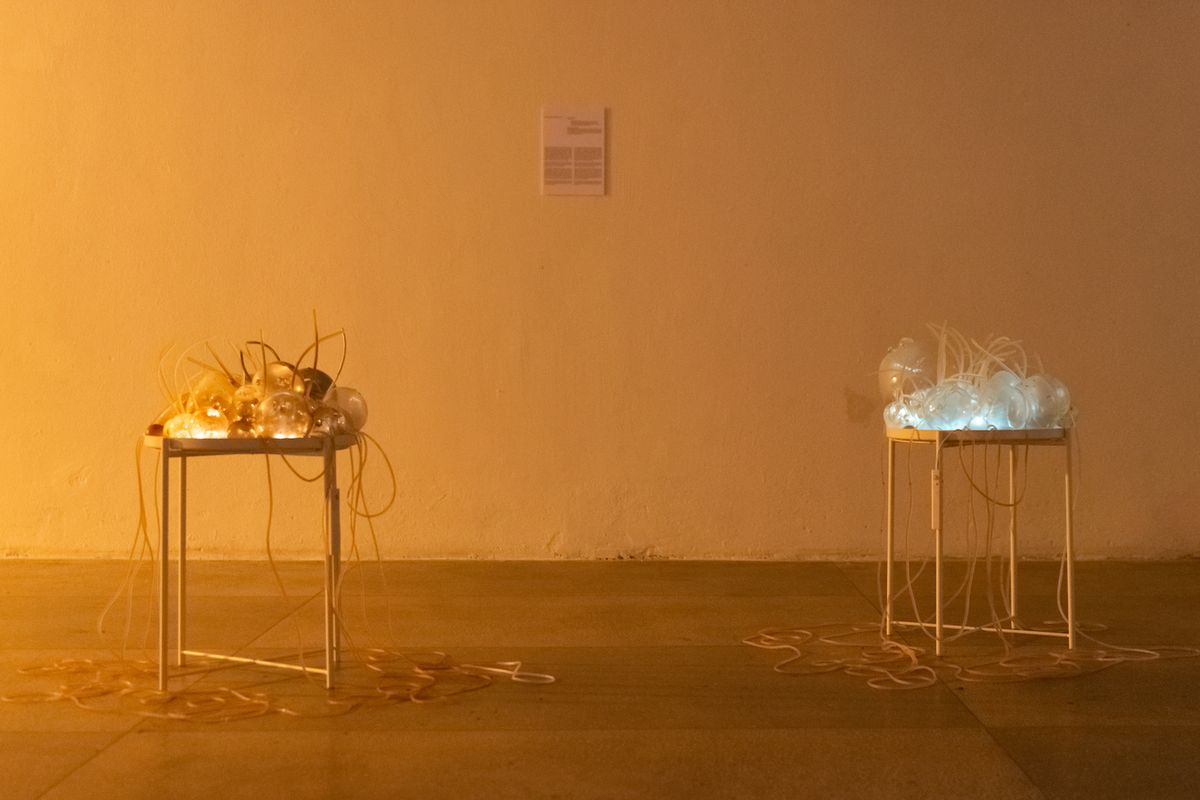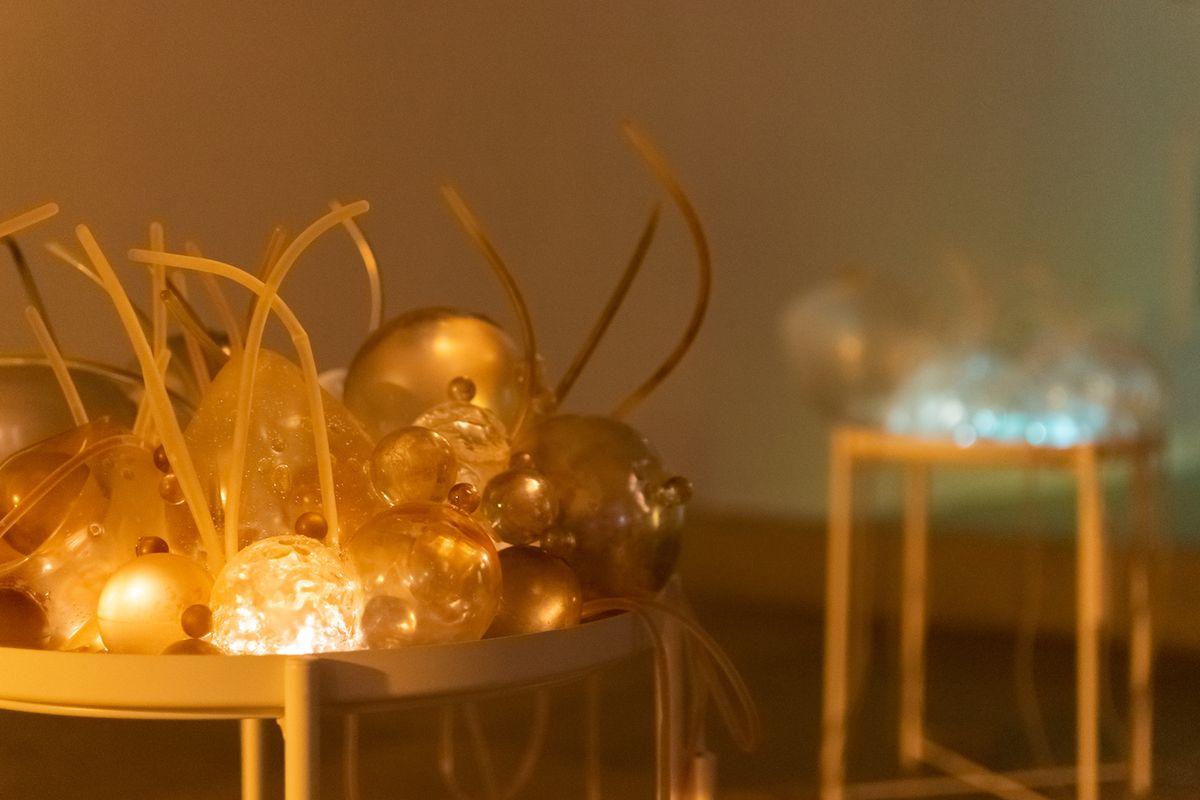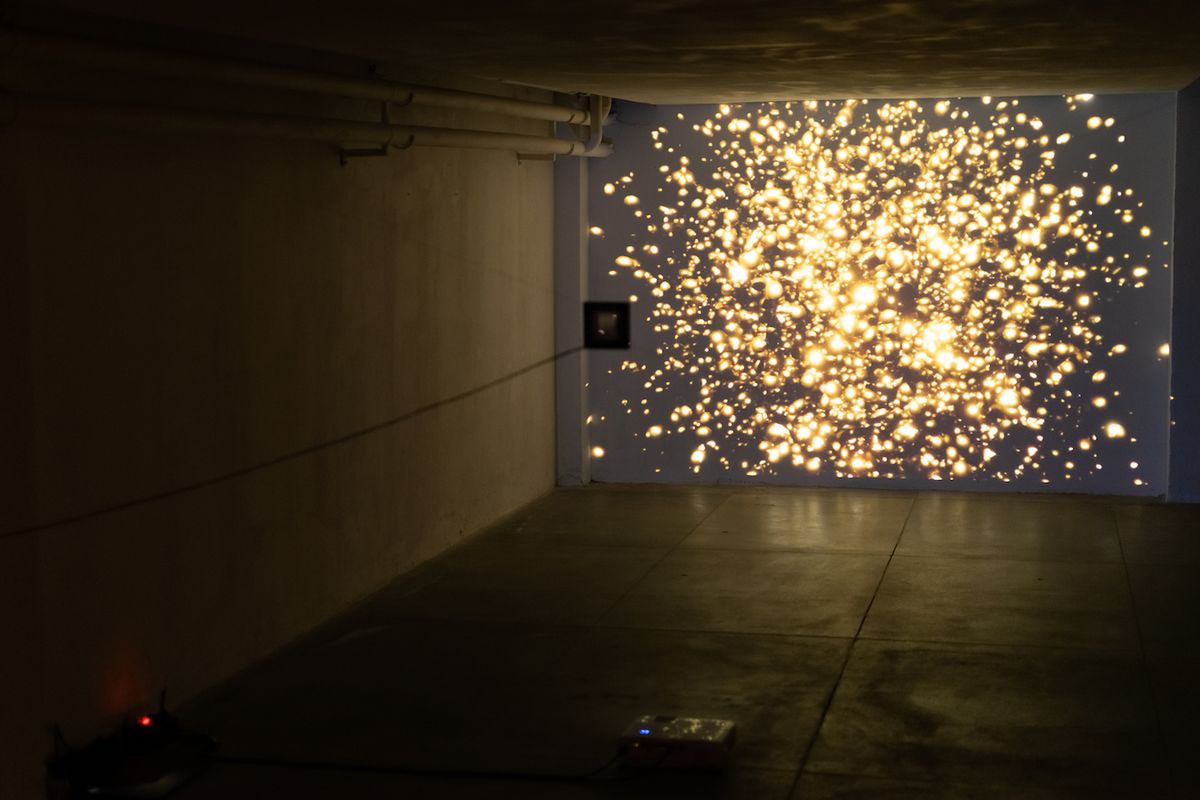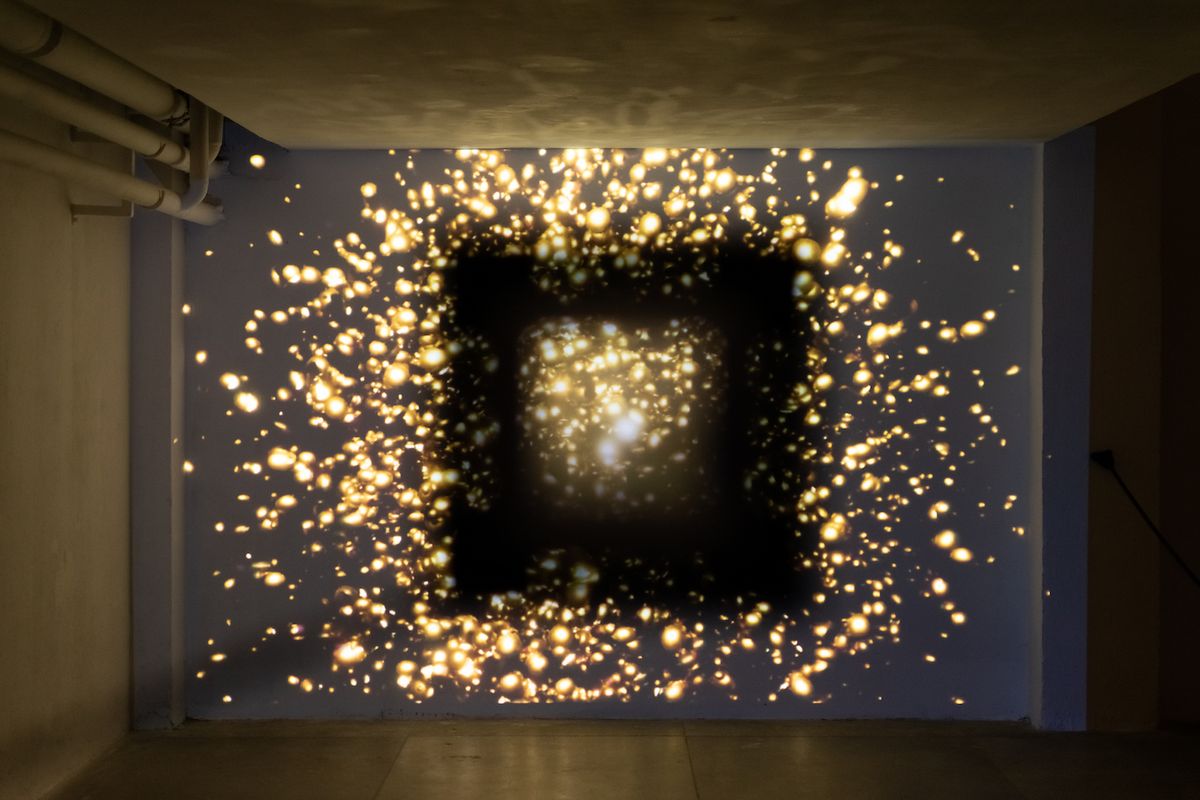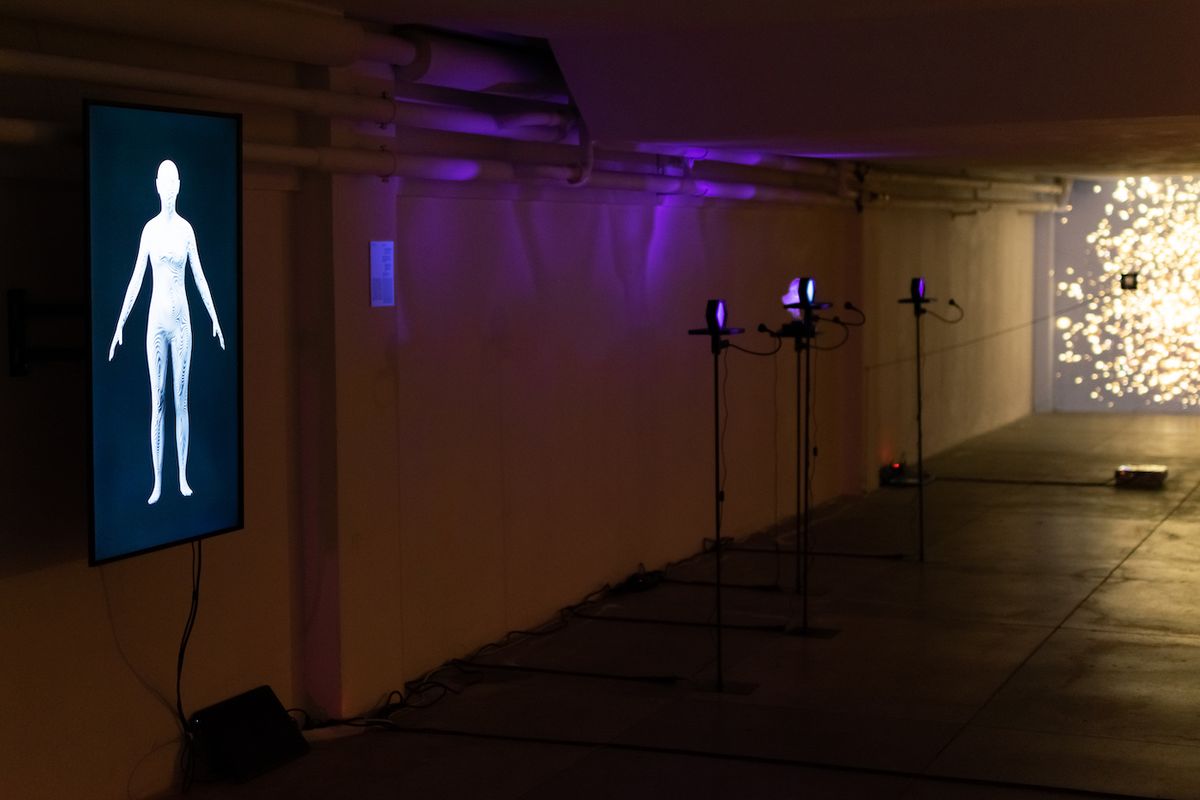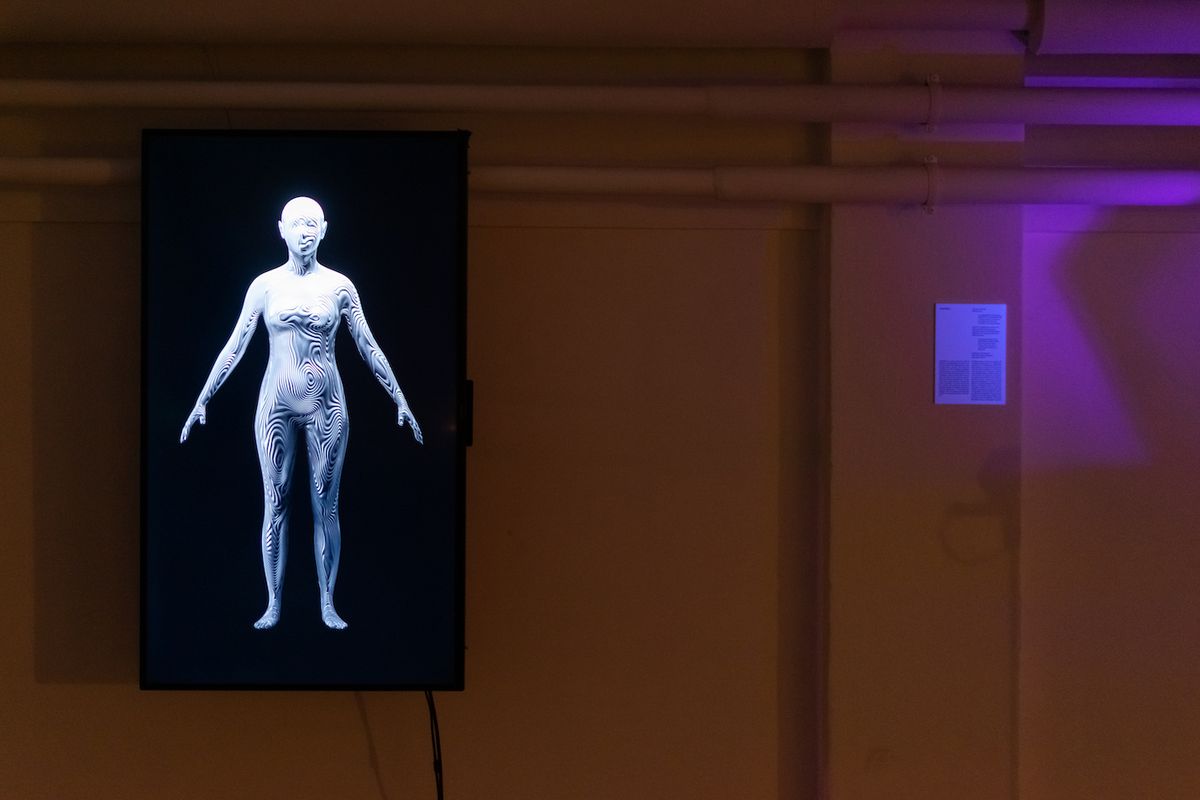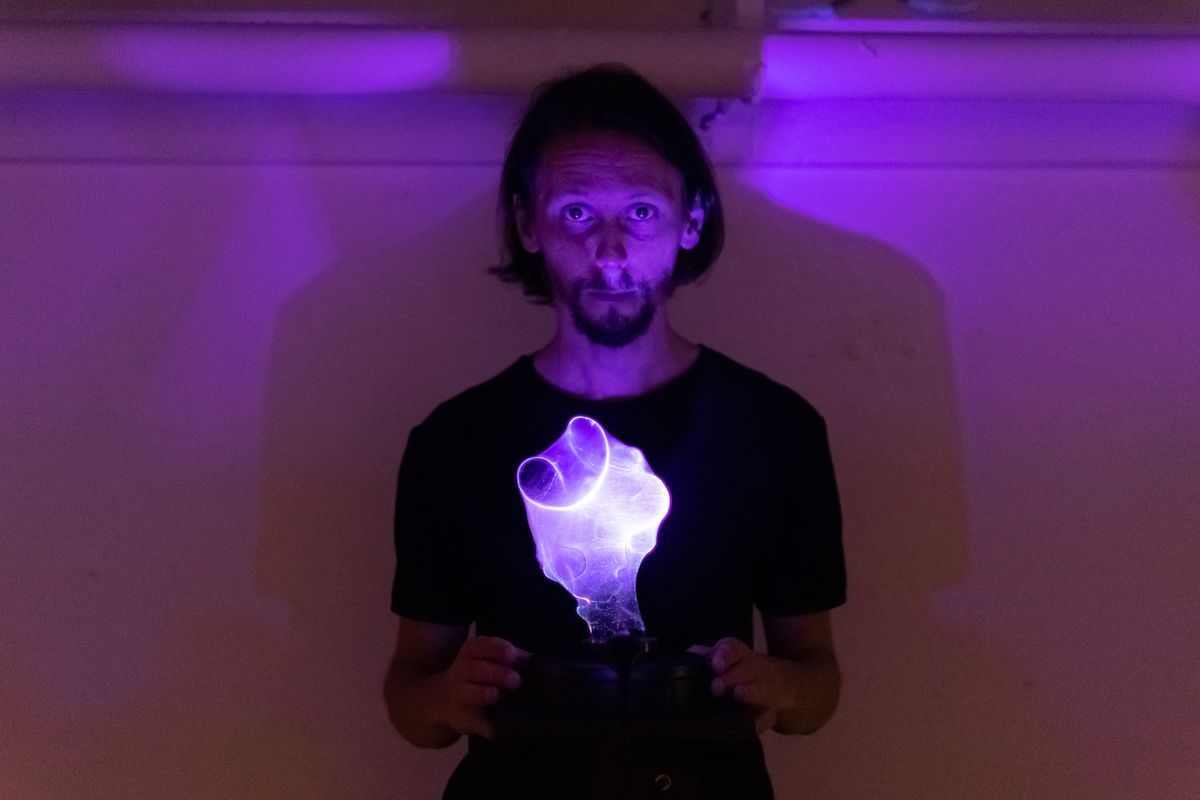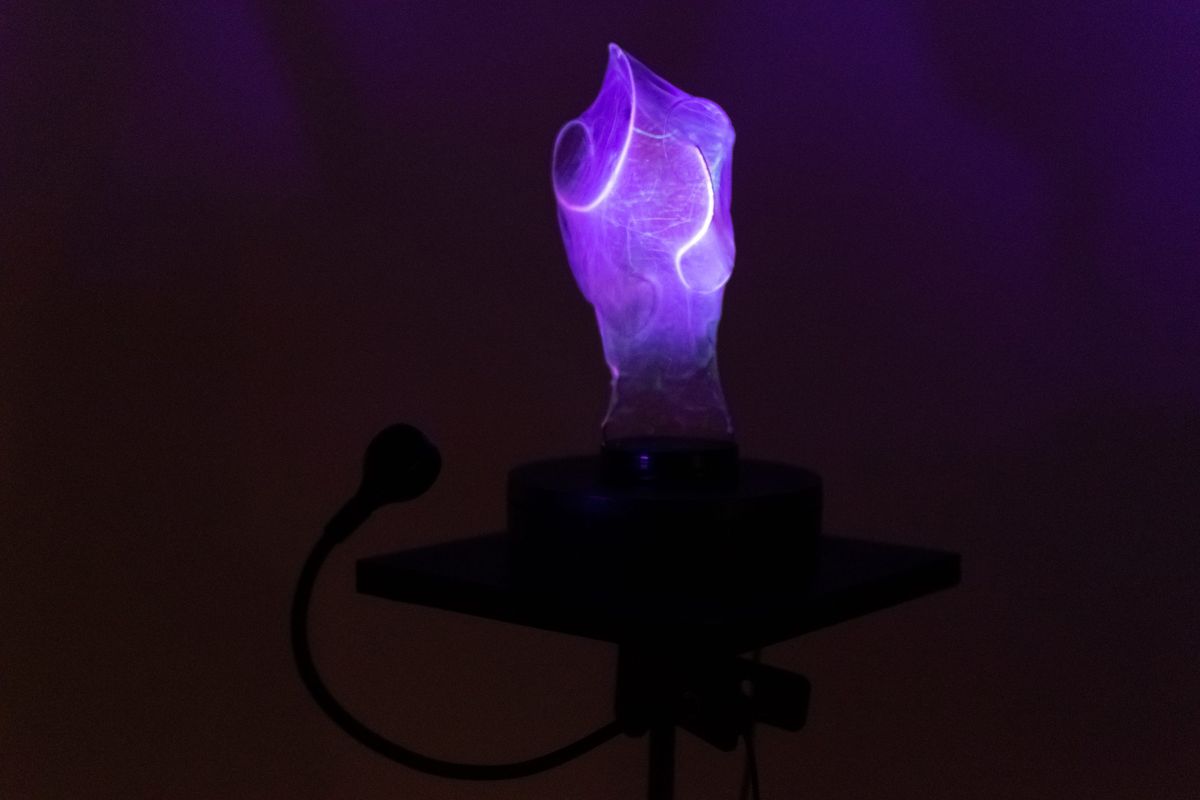Fusion:AIR | 2022
ARTISTS | SCIENTISTS
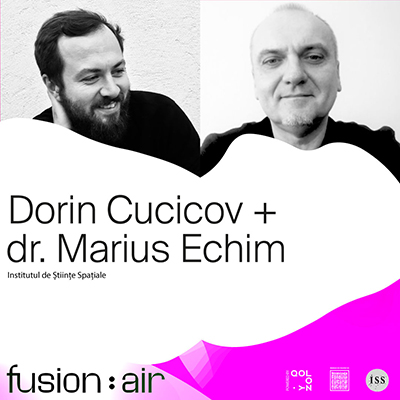
MYTHERRELLA
Interactive installation
Author: Dorin Cucicov
Scientific collaborator: phd. Marius Echim, Space Science Institute
Sound design: Iulia Smeu
Special thanks: Mihail Cucicov, Silvia Melnic, Gabriel Voitcu, Octavian Arnăut, Urban Braendstroem, Grig Burloiu.
Mytherrella is an infinite iteration through a process of imagination built on scientific data and driven by the mythology of the aurora borealis. It dreams of new auroral formations starting from a dataset of all-sky images depicting auroral activity from the Kiruna Atmospheric and Geophysical Observatory at the Swedish Institute of Space Physics. Mytherrella uses human interaction in an effort to give up control over its hallucinations. Both human and computer are in search of the lost auroras as seen by the first people that described them. Ten mythological lores and oddities are woven together with soundscapes and computer-generated images, attempting to recreate the original narrative, but only a faint trace of the prior magic can be unearthed.
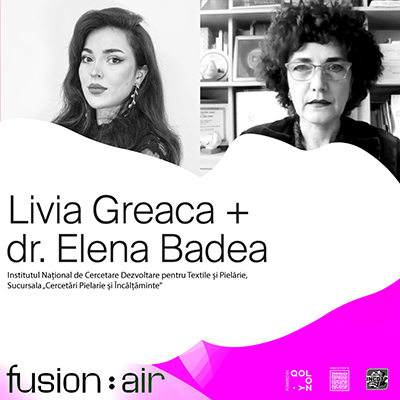
CHROMA
Technique: mixed media – tempera on parchment and leather; acrylic on parchment and leather; dyeing fabric; handling fabric, parchment and leather.
Author: Livia Greaca
Scientific collaborator: phd. Elena Badea, National Research & Development Institute for Textiles and Leather, Advanced Research for Cultural Heritage Laboratory (ARCH Lab)
The Chroma art installation explores the theme of perception and the symbolism of colors. Its objective is to investigate, analyze, and express, in terms of contemporary art, the intricate interplay between science, art, and technology throughout the centuries that has given rise to the diverse tones and shades shaping the universe of visual arts since ancient times. The artwork takes a journey into the realms of pigments and natural materials, encompassing both organic and inorganic substances. It traces the historical trajectory of technology and science, leading up to the present era dominated by polymer and synthetic materials.
Symbolically, the artistic discourse seeks to offer an alternative perspective on color. The goal is to unveil a pigments’ topography by making visible the microscopic aspects and specific configurations of these pigments. This process aims to capture the materiality of an otherwise intangible concept — the sensation, or rather, “the shape of color.”
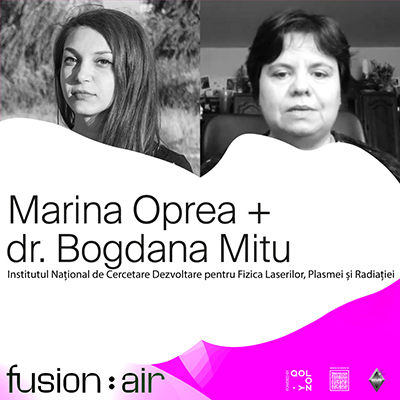
INTRACLUSTER SPROUTS
Epoxy resin, steel frame, LED lights, motion detector Part of the resin components were taken to the lab and subjected to various processes of plasma deposition.
Author: Marina Oprea
Scientific collaborator: dr. Bogdana Mitu -National Institute for Laser, Plasma & Radiation Physics (INFLPR)
**Intracluster Sprouts** is an interactive artwork inspired by mycelium, the branching system constituting the vegetative part of fungi. Mycelium, with its spores seeking sustenance from its surroundings, functions as a perpetual expansion system, capable of interpreting and communicating with the environment while altering its properties. This fungal network establishes inter-connectivity between plants, presenting a co-hybrid existence within all surrounding systems, whether natural, artificial, or virtual. The artwork proposes a mutant, rhizomatic, yet healthier model of coexistence and communication.
Mycelium is omnipresent on Earth, existing both macroscopically and microscopically, outside and inside the human body. It serves as a catalyst for various mycotic processes crucial for life and even death (putrefaction).
By drawing parallels between plasma, the fourth and most abundant form of matter in the universe, and mycelium, Intracluster Sprouts envisions mycelium existing beyond terrestrial boundaries. Much like mycelium, plasma can alter the properties of the bodies it encounters, imparting new, almost extraterrestrial characteristics. Just as mycelium forms the wood wide web, a network facilitating plant communication within the Earth, plasma binds together stars in the cosmos, including our own sun.
The spores depicted in the artwork do not rely on the sun’s energy; instead, they utilize the internal light generated by the presence of human bodies. This unique connection underscores the shared genetic relationship between fungi and humans, distinct from their association with plants
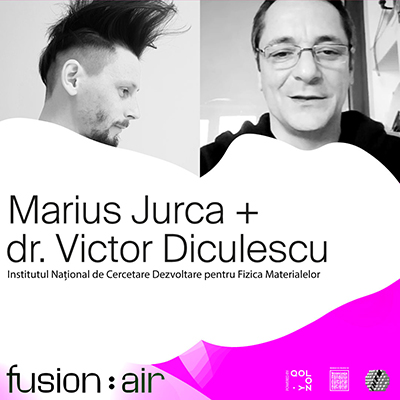
[IN]VISIBLE STREAMS
Author: Marius Jurca
Scientific Collaborators: Dr. Victor C. Diculescu, Dr. Monica Enculescu, Dr. Alexandru Evanghelidis, Dr. Anca Aldea, Ing. Daciana Bota
Scientific Consultants: Dr. Teodor Adrian Enache, Dr. Corina Ciobotaru, Drd. Melania Onea, Biolog Daniela Oprea
Students consultants: Diana Deverdics, Bianca Tudose, Alin Ionuț Alecu
InVisible Streams is a series of three works created in collaboration with researchers from the National Institute of Research and Development for Materials Physics.
The SenzSkin project highlights the sensitivity of human skin as an interface between the human body and the surrounding environment. The experiment allows the audience to dynamically visualize an invisible biochemical process unfolding at the skin level.
FiberWow is a color study aimed at achieving colorful gradients through multiple depositions of nanometric fibers on various geometric shapes. The experiment showcases the physical and aesthetic qualities of polymeric nanofibers that underlie numerous research efforts within the hosting institute.
FiberStream is an interactive project that enables the audience to influence the entropy of a dynamic system using their own breath, providing visitors with the opportunity to modify the real-time dynamics of a three-dimensional virtual structure.
